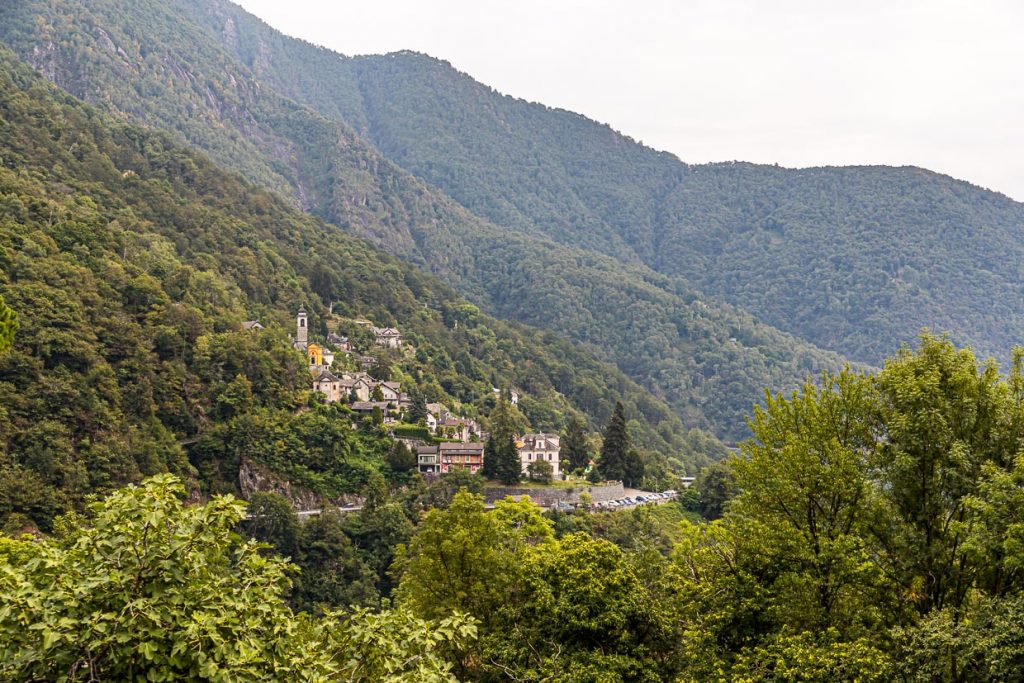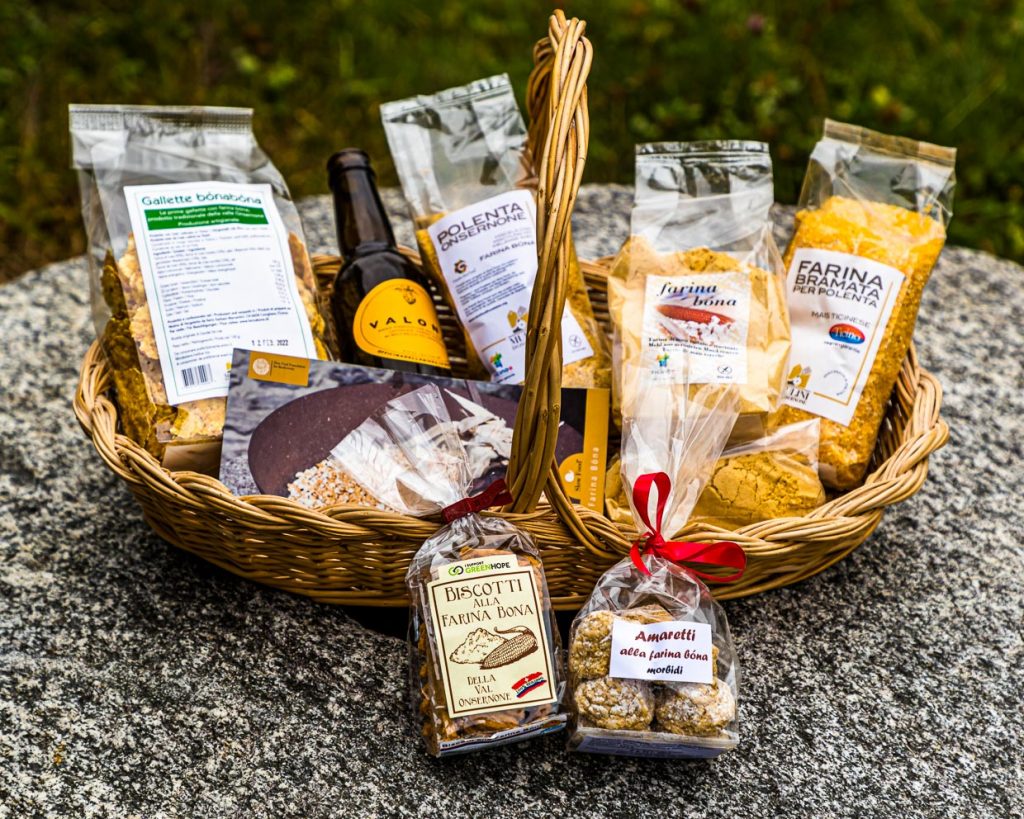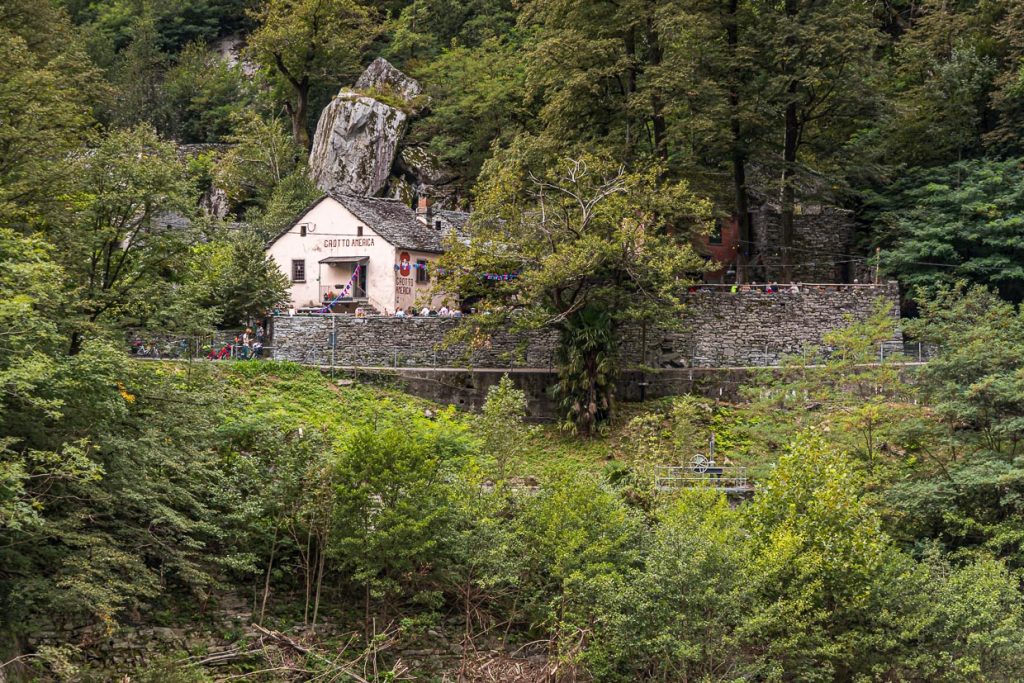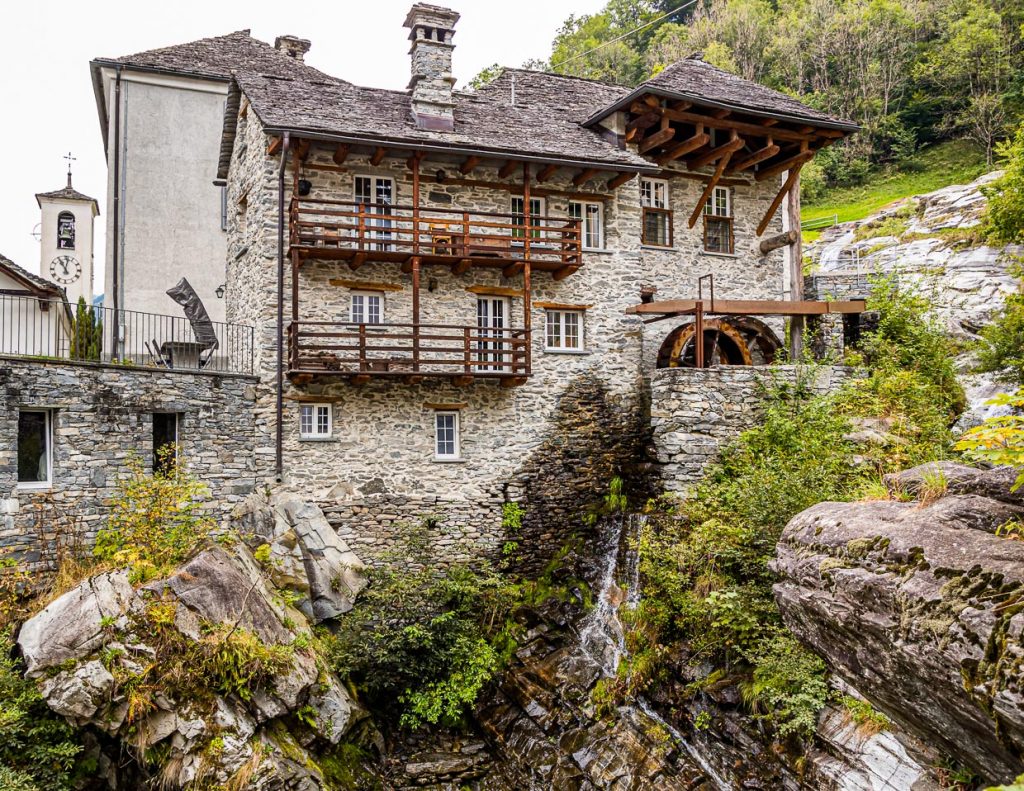The memory of the time of the clattering mills in the Onsernone Valley in Ticino is fleeting. There are hardly any written records. Nunzia Terribilini, the last miller of Vergeletto died in 1958 and no one has followed up the tradition of Farina Bona after her death. Many details have to be painstakingly researched and tried out again. What kind of corn was used? How long was it roasted? How fine was the sieve? The original Farina Bona product no longer exists. It was only in 1991 that an old mill was restored in the Onsernone Valley in the village of Loco, about 15 kilometers from Locarno. Today there is a museum dedicated to the history of the mills and to the special flour of this area.

The teacher with the long breath
The small museum also aroused Ilario Galbani ‘s interest in the almost forgotten specialty of his homeland. However, it took many years before the teacher’s kindled passion for the good flour from the Onsernone Valley would result in a wide range of products. Records and memories of the people from Vergeletto have helped him in this process.

Over time, Ilario discovered the almost forgotten secret of Farina Bona from Vergeletto. The special aroma, the almost beguiling fragrance that is transmitted to the baked product, lay in the roasting of the corn kernels – before – they were ground.


Farina Bona and the smell of popcorn
We enter the small production hall in Vergeletto. Ilario has housed his machines in the former gymnasium of the village school. It smells like popcorn. But somehow more complex and spicy than a bag of popcorn in a movie theater seat. Ilario roasts corn kernels for us in a coffee roasting machine. He now knows that when about 30 percent of the kernels have popped at a temperature of 200 degrees, the roasting process is finished. More popped grains would no longer produce enticing roasted aromas and fragrance, but would make the flour bitter in the final product, Ilario explains. Millers used to roast the rye and later the corn in large pans.

Today, Ilario Galbani owns other production machines in addition to his roasting machine. Right now, a small Korean machine is producing round crackers from coarse Farina Bona. They are lightly salted and packaged as snacks for a Swiss supermarket chain. The small grocery store in town sells all of Ilario’s products: Farina Bona, polenta flour, crackers, cookies and even ice cream.

Student help for the rediscovery of Farina Bona
It was not always like this, because the rediscovery of Farina Bona dragged on. There was a lack of concrete recipe ideas at the beginning. Quantities had to be tested out. The teacher with a passion for good flour was helped by his own school class. In 2005, Ilario gave the students from the Onsernone Valley a special task. He gave them small quantities of Farina Bona to take home and they were asked to come up with dishes using the traditional flour of their homeland. The result was numerous recipe ideas for soups and cakes. One recipe development from that school lesson has made it onto restaurant menus as far away as Locarno. It is an ice cream with Farina Bona and consists of milk, cream, sugar and only five percent Farina Bona.

The path from rye to corn
Around 1850, the first corn reached the valley. For many centuries, the inhabitants of the Onsernone Valley produced their farina bona from rye flour. There was more than enough of it due to the existing straw industry, because in the 16th and 17th centuries baskets and hats were made from rye straw in the Onsernone Valley. The special trick, in the production of rye flour was the roasting. In this way the flour was preserved from mold and was storable for the long winter. With the construction of a big road, the first corn from Lombardy reached the Onsernone Valley. The inhabitants began to deal with the corn in the same way they were used to do with the rye. First roast, then grind.

The Parco dei Mulini in Vergeletto
At its peak, there were 20 mills in the Onsernone Valley, five of which were in Vergeletto. Today, as an ensemble, they form the Parco dei Mulini Vergeletto. All the mills are preserved in very different conditions. A staircase leads up the hill. Plaques recall the marriage of the mills. The water still rushes today. It falls from the 2,300 meter high Pizzo Cramalina down into the valley.


The mills in the Onsernone Valley
Partly pipes, partly hollowed-out tree trunks carry the water to the mills. Ilario has restored the lower mill for his production. He always wears a fine straw hat as a reminder of the days of straw production. Ilario climbs up the small wooden ladder. It is no longer comfortable here next to the grinder. The rooms of the old mill have been used for other purposes for many years. Now the room is not as high as it used to be, and when he fills the bag with the golden and roasted corn kernels into the hopper, he has to pull his head in.

From the inside, he uses a lever to direct the water outside onto the mill wheel. Ilario unlocks the millstone and very slowly movement comes into the mill wheel. In the sparse records of Nunzia Terribelini, the last miller of Vergeletto, the production quantity of one kilo per hour is noted for this mill. This is very little, but it is due to the hardness of the corn grains.

For the flour, Ilario uses a sieve with different degrees of fineness. The gradations allow him to catch fine, medium and coarse flour at the same time, which is used for different products. The Vergeletto mill is a kind of open monument. Here visitors can stop by any day and see everything independently. Every Tuesday Ilario Galbani also offers guided tours combined with a small tasting.

The use of Farina Bona in the kitchen
The silky, fine Farina Bona is often mixed with white flour in baking. It is so intense in flavor that a ratio of ¼ Farina Bona to ¾ white flour or other flours such as spelt is sufficient. A recipe from the old days describes stirring Farina Bona into hot milk and adding some fresh fruit like blueberries or blackberries. Ilario himself prefers to eat Farina Bona in glacé or classically stirred into warm milk. Other producers have also begun to experiment with Farina Bona. In the region, for example, there is also a wheat beer refined with Farina Bona. Ilario is happy about every well-made product innovation. This is how this specialty from the Onsernone Valley will be preserved for the future and saved from another phase of near oblivion.

As small as the world of Vergeletto and the history of Farina Bona are, the knowledge that Ilario Galbani has accumulated on the subject over the years is vast. In conversation, he reports that there are some relatives of the Farina Bona in the world. In the Canary Islands it is called gofio. It is composed of cereals, legumes and a little salt. In Nepal and Tibet it is a staple food, called tsampa, and is made from roasted barley, sometimes rice or wheat.

We leave Vergeletto and the Parco dei Mulini with a packet of Farina Bona for private cooking experiments. At lunch at the legendary Grotto America in Ponte Brollo, the glacé with Farina Bona promptly catches our eye on the menu, and a scoop of this very special Ticino specialty rounds out lunch.
Culinary seconds from Angela Berg
Farina Bona, the precious flour from Vergeletto, has now arrived in my kitchen. I keep it in a tin can. Every time I open the lid, that simple yet sensual fragrance wafts toward me. Although my supply is dwindling, I can’t help but add a teaspoon to my breakfast porridge in the pot every morning. The Ticino popcorn elixir is a real upgrade for the poor man’s food that originated in Scotland.
The research trip was partly supported on site by Switzerland Tourism


